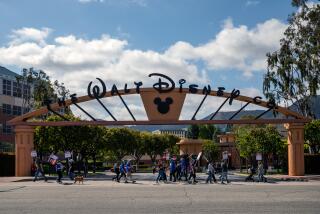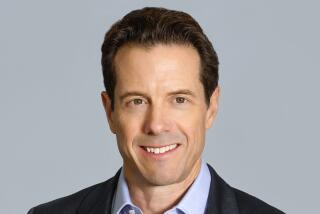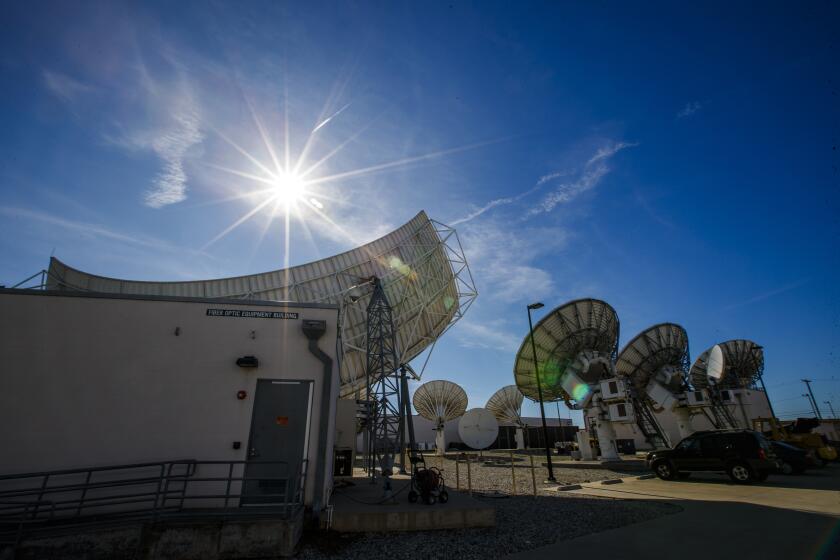Disney restructures its business as digital disruption shakes up the media industry
Walt Disney Co. announced Wednesday a sweeping restructuring aimed at accelerating its global expansion during a period of upheaval for Hollywood.
The Burbank-based entertainment giant said it would combine its international media business and its content streaming operation into one unit and create another division to house its consumer products business along with Walt Disney Parks and Resorts.
The move — Disney’s biggest restructuring in recent years — is the latest effort by a legacy entertainment and media company to adapt to rapid changes in consumer behavior driven by digital technology.
Disney had been expected to make structural changes as it prepares to launch two streaming services and buy film and TV assets owned by 21st Century Fox — a $52.4-billion deal that requires federal regulatory approval.
Disney’s new direct-to-consumer and international unit will include the upcoming ESPN+ streaming service, which launches later this year, and a Disney-branded film and TV streaming offering scheduled to debut in 2019.
The unit also will include video-on-demand service Hulu, in which Disney would own a controlling stake if the Fox deal is approved. Kevin Mayer, who has been Disney’s chief strategy officer since 2015, was named chairman of the new global business.
“It is a much different company today from when we were growing up,” said Jason Moser, a Motley Fool analyst. “As Disney is introducing these new direct-to-consumer offerings, they have to look at it a little bit differently. They are more in control of the delivery of [content]. This is really them taking more control over that experience with the consumer.”
The combining of Disney’s parks and resorts business and its consumer products group will help streamline operations for units that already had their share of overlap.
Bob Chapek, who has headed Disney Parks and Resorts since 2015, was named chairman of the new unit. As its leader, Chapek will assume additional responsibility for all of Disney’s consumer products operations globally, including licensing and Disney stores.
Consolidating consumer products and theme parks makes sense because both operations are centered on the company’s treasure trove of characters and franchises, Moser said.
“The parks are where they continue to build out that experience with the consumer, but as they do that, they can produce more and more consumer-related products based on all that [intellectual property],” he said.
Disney Chairman and Chief Executive Robert Iger said in a statement that the changes would position the company “for the future, creating a more effective, global framework to serve consumers worldwide, increase growth and maximize shareholder value.”
In December, with the announcement of the prospective Fox deal, Iger, 67, extended his contract by three years; he is now expected to retire in 2021 when his new pact ends.
The restructuring plan, which is effective immediately, elevates key lieutenants Mayer and Chapek, who now are poised to work more closely with Iger for the remainder of his tenure.
Their promotions come amid much speculation about who will be chosen as Iger’s successor.
Chapek was head of Disney Consumer Products before being tapped to lead the parks group. The 58-year-old executive also previously was president of distribution for Walt Disney Studios.
During Mayer’s time at Disney, he has overseen the company’s key strategic acquisitions of Pixar, Marvel, Lucasfilm and most recently, the pending Fox deal. Before becoming senior executive vice president and chief strategy officer, Mayer, 55, was executive vice president for corporate strategy and business development.
Scott Krisiloff, chief investment officer at Avondale Asset Management, said Mayer has been presented with a high-profile opportunity. “You have to be savvy on a new playing field, which is direct-to-consumer digital distribution, and Disney has not yet proven it has mastered that,” said Krisiloff, whose company is not an investor in Disney. “[Mayer] has the opportunity to prove himself and the ability to build something for Disney in this playing field.”
The last time Disney restructured its business units was in 2015, when it merged its interactive and consumer products units, a move that was designed to better align once-distant businesses that new technology had brought closer together.
Two Disney units — media networks and studio entertainment — are remaining the same, save for minor changes, such as the studio’s program sales operation moving to the direct-to-consumer and international unit.
daniel.miller@latimes.com, jaclyn.cosgrove@latimes.com
@DanielNMiller, @jaclyncosgrove
UPDATES:
2:30 p.m.: This article was updated with more details on the restructuring.
12:45 p.m.: This article was updated with comments from an analyst.
10:55 a.m.: This article was updated with details on the organization.
This article was originally published at 9:45 a.m.
More to Read
Inside the business of entertainment
The Wide Shot brings you news, analysis and insights on everything from streaming wars to production — and what it all means for the future.
You may occasionally receive promotional content from the Los Angeles Times.












